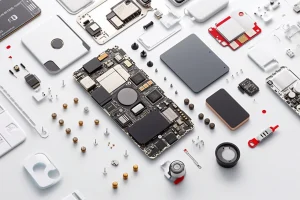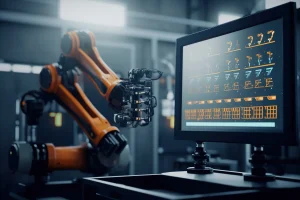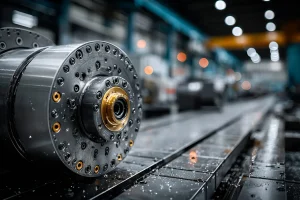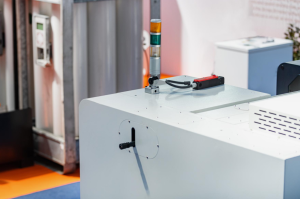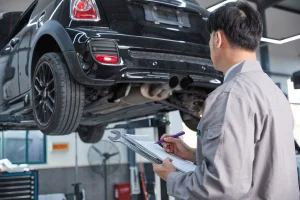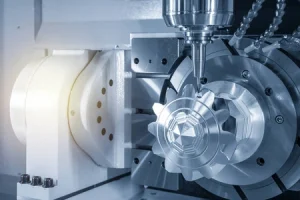In the rapidly evolving field of robotics, collaborative robot components play a crucial role. These components are the building blocks that enable collaborative robots, or cobots, to work safely and effectively alongside humans in various industrial settings. One of the key processes in manufacturing high – quality collaborative robot components is five – axis precision machining. This article will explore the significance, process, and benefits of five – axis precision machining for collaborative robot components, as well as the value that Rapidefficient brings to the CNC machining market.
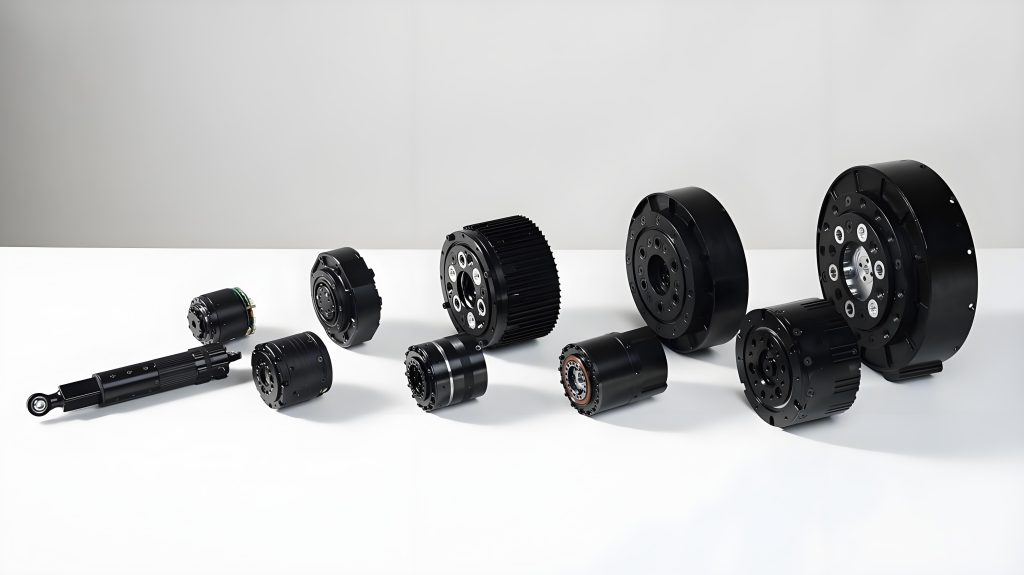
The Significance of Collaborative Robot Components
Collaborative robots have gained popularity in recent years due to their ability to enhance productivity and flexibility in manufacturing. They can perform tasks that are either too dangerous, too repetitive, or require high precision for human workers. The components of these collaborative robots, such as joints, links, and end – effectors, need to be manufactured with extreme accuracy. Precise components ensure smooth movement, high torque transmission, and long – term reliability of the cobots. For example, in the electronics manufacturing industry, collaborative robots are used for delicate tasks like circuit board assembly. The components of these cobots must be made with micron – level precision to avoid any errors during the assembly process.
An Introduction to Five – Axis Precision Machining
What is Five – Axis Machining?
Five – axis precision machining is a advanced manufacturing technology that allows the cutting tool or the workpiece to move along five different axes simultaneously: three linear axes (X, Y, and Z) and two rotational axes (usually A and B or A and C). This multi – axis movement provides a high degree of freedom in machining complex geometries. In contrast to traditional three – axis machining, which is limited in its ability to access all sides of a workpiece, five – axis machining can reach any point on the workpiece surface without re – positioning the part.
Why is it Ideal for Collaborative Robot Components?
Collaborative robot components often have complex shapes and require high – precision tolerances. Five – axis machining can meet these requirements. For instance, the joints of collaborative robots often have intricate curved surfaces. With five – axis machining, manufacturers can machine these complex shapes in a single setup, reducing the need for multiple operations and minimizing errors. This not only improves the accuracy of the components but also shortens the production cycle.
The Process of Five – Axis Precision Machining for Collaborative Robot Components
Design and Programming
The first step in five – axis precision machining is the design of the collaborative robot components. Engineers use computer – aided design (CAD) software to create a 3D model of the component. This model serves as the basis for the machining process. After the design is complete, computer – aided manufacturing (CAM) software is used to generate the toolpaths for the five – axis machine. The programming takes into account the geometry of the component, the type of cutting tool, and the machining parameters such as speed, feed rate, and depth of cut.
Material Selection
Choosing the right material is crucial for the performance of collaborative robot components. Common materials used include aluminum alloys, titanium alloys, and high – strength plastics. Aluminum alloys are popular due to their high strength – to – weight ratio, good thermal conductivity, and relatively low cost. Titanium alloys, on the other hand, offer excellent strength and corrosion resistance, making them suitable for components that need to withstand harsh environments. The material selection is based on the specific requirements of the component, such as its application, load – bearing capacity, and operating conditions.
Machining Operations
Once the design and programming are complete and the material is selected, the actual machining process begins. The five – axis machine uses a variety of cutting tools, such as end mills, ball – nose mills, and drills, to remove material from the workpiece according to the programmed toolpaths. During the machining process, the machine operator monitors the process to ensure that everything is running smoothly. Advanced five – axis machines are also equipped with sensors that can detect any abnormalities, such as tool wear or vibration, and make adjustments in real – time.
Quality Control
Quality control is an integral part of the five – axis precision machining process. After the machining is complete, the components are inspected using various techniques, such as coordinate measuring machines (CMMs), optical inspection, and surface roughness measurement. CMMs are used to measure the dimensions of the component to ensure that they meet the design specifications. Optical inspection is used to detect any surface defects, such as cracks or scratches. Surface roughness measurement is important as it affects the performance of the component, especially in terms of friction and wear.
Rapidefficient’s Value in the CNC Machining Market
Technological Innovation
Rapidefficient is at the forefront of technological innovation in the CNC machining market. The company invests heavily in research and development to continuously improve its five – axis precision machining technology. For example, Rapidefficient has developed advanced CAM software that can optimize the toolpaths for collaborative robot components, reducing machining time and improving surface finish. The company also uses high – speed spindles and advanced cooling systems in its five – axis machines, which can increase the cutting speed and improve the efficiency of the machining process.
Customized Solutions
Rapidefficient understands that each customer has unique requirements when it comes to collaborative robot components. The company offers customized solutions to meet these needs. Whether it’s a small – batch production of a new prototype or a large – scale production of standard components, Rapidefficient can provide tailored machining services. The company’s engineering team works closely with customers from the design phase to the production phase, providing technical advice and support to ensure that the final product meets the customer’s expectations.
Quality Assurance
Quality is a top priority for Rapidefficient. The company has a strict quality management system in place to ensure that all its products meet the highest standards. From the selection of raw materials to the final inspection of the finished products, every step of the production process is carefully monitored. Rapidefficient also has a team of experienced quality control inspectors who use the latest inspection equipment to ensure that the components are of the highest quality.
Cost – Effective Solutions
In addition to high – quality products and services, Rapidefficient also offers cost – effective solutions. The company’s advanced machining technology and efficient production processes allow it to reduce production costs without sacrificing quality. This makes Rapidefficient an attractive choice for customers who are looking for high – quality collaborative robot components at a reasonable price.
Challenges and Solutions in Five – Axis Precision Machining of Collaborative Robot Components
Technical Challenges
One of the main challenges in five – axis precision machining of collaborative robot components is the complexity of the machining process. The simultaneous movement of five axes requires precise control and coordination, which can be difficult to achieve. Another challenge is the high cost of five – axis machines and the associated software and tools. Additionally, the programming of five – axis machines is more complex than that of three – axis machines, requiring highly skilled operators.
Solutions
To overcome these challenges, manufacturers are constantly improving their machining technology and processes. For example, the development of more advanced CAM software has made it easier to program five – axis machines. The use of simulation software can also help manufacturers to test the machining process before actual production, reducing the risk of errors. In terms of cost, some manufacturers are investing in shared manufacturing facilities, where multiple companies can share the cost of five – axis machines and other equipment.
Future Trends in Five – Axis Precision Machining of Collaborative Robot Components
Integration of AI and IoT
The future of five – axis precision machining of collaborative robot components lies in the integration of artificial intelligence (AI) and the Internet of Things (IoT). AI can be used to optimize the machining process, such as predicting tool wear and adjusting the machining parameters in real – time. IoT technology can enable the connection of five – axis machines to a network, allowing for remote monitoring and control. This will improve the efficiency and productivity of the machining process.
Development of New Materials
As the demand for more efficient and lightweight collaborative robots increases, the development of new materials will also play an important role. New materials with better mechanical properties, such as higher strength – to – weight ratios and improved corrosion resistance, will be developed. These new materials will require new machining techniques, which will drive the development of five – axis precision machining technology.
Conclusion
Five – axis precision machining is essential for the production of high – quality collaborative robot components. It offers the precision and flexibility needed to manufacture complex – shaped components with tight tolerances. Rapidefficient, with its technological innovation, customized solutions, quality assurance, and cost – effective services, has established itself as a leading player in the CNC machining market. As the field of robotics continues to grow, the demand for five – axis precision machining of collaborative robot components will only increase, and companies like Rapidefficient will be at the forefront of meeting this demand.
If you are looking for a reliable and professional CNC aluminum processing service provider, look no further than Rapidefficient. With years of experience and a commitment to excellence, Rapidefficient can provide you with high – quality collaborative robot components that meet your specific requirements. Contact Rapidefficient today to learn more about their services.

